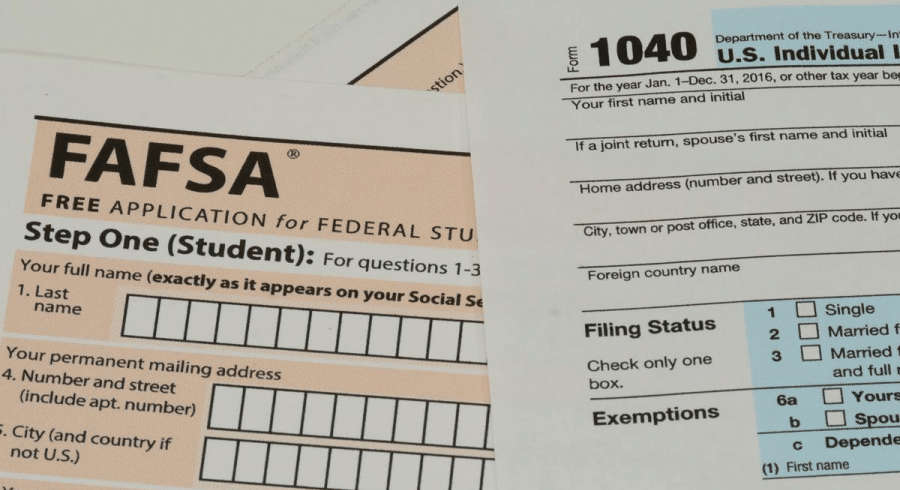Six Strategies to Minimize Alternative Minimum Tax from Incentive Stock Options
- Exercising incentive stock options and then selling shares can result in a costly Alternative Minimum Tax bill
- There are planning techniques we can use to help you maximize the after-tax value of your ISOs
- Understanding all scenarios while having a long-term focus creates better solutions for tech industry professionals who have significant equity compensation
The Alternative Minimum Tax (AMT) is one of the most unpopular ways the IRS collects income tax. It’s essentially a rate floor. Originally designed to ensure wealthy individuals and families pay sufficient taxes, inflation and wage gains caused more Americans to get hit with the AMT over the years. The 2017 Tax Cuts and Jobs Act (TCJA) significantly reduced the chances that a taxpayer would be subject to the AMT, but tax rules revert to pre-2017 conditions starting in 2026. In general, you have a higher chance of being subject to the AMT if you have a high household income, realize a large capital gain, or exercise valuable stock options.
ISOs and Qualifying Dispositions
Incentive stock options (ISOs) allow you to purchase your company’s stock at a fixed price for a set period, regardless of the current fair market value of the stock. ISOs can be assets to generate significant wealth if they have a low exercise price relative to the current share price. What’s more, certain tax advantages come with ISOs. For example, you can make a qualifying disposition if you exercise the options, then hold the shares for at least one year and at least two years after the grant date. That strategy allows you to pay favorable long-term capital gain tax rates, rather than higher income tax rates, on the difference between the exercise price and the price at which you sold the stock.
Understanding the AMT
Getting back to the AMT and how it can be costly if you exercise a large value of ISOs in a single year, you can think of the AMT as a parallel tax system. It applies when your income exceeds a certain threshold. AMT complicates the decision to exercise ISOs and hold shares or exercise and sell. It’s important to know that AMT is more common during years in which you exercise ISOs and hold the stock because of the “bargain element.” The bargain element is an adjustment item on your taxes describing the lucrative spread between the ISOs’ exercise price and the shares’ fair market value at the time of exercise. The bargain element is not included when calculating your regular tax, but it’s an accounting difference that makes the AMT common in years that taxpayers exercise stock options and hold shares.
Six Ways to Mitigate AMT Risk
As you can see, the AMT can cause some people to lose sleep around tax time. The good news is there are steps we can take to lower your AMT liability or avoid it altogether. Here are our favorite six strategies:
- Exercise ISOs early in the year.
Selling shares after exercising ISOs creates a taxable reporting event. Exercising then holding the shares early in the year might be a good idea if you need to manage a cash flow burden from the AMT. There are two reasons why. The first has to do with the one-year holding period requirement to sell the shares as a qualifying disposition – a qualifying disposition allows you to sell at relatively low long-term capital gains rates. By exercising early in the year, you start that one-year requirement sooner.
The second reason is that you may be able to sell shares as a qualifying disposition before taxes are due – that means you can use the proceeds from the stock sale to cover the pending tax due. For example, you could exercise ISOs in January of the current year, hold them until you sell (at least one year and one day later), then use the proceeds from the sale to cover the tax bill due the following April.
Exercising early in the calendar year lets you monitor the stock price in the months following. If the share value is higher by year-end, you might be better off holding them for a qualifying disposition early in the following year. If the stock price drops, selling sooner could make more sense since you will likely just face ordinary income tax rates on the disqualifying disposition, and no AMT – the value of this strategy is more apparent once you better understand your total income for the year.
- Exercise and hold ISOs when the spread is low.
You may be able to lower the AMT impact simply by exercising ISOs when the price difference between the options’ exercise price and the stock’s fair market value is small. A lower spread between the two prices means a smaller AMT adjustment on your tax return. The adjustment may be so minor, in fact, that you can exercise and hold ISOs without owing AMT altogether.
Exercising and holding ISOs with a small spread may be an attractive strategy for individuals who received stock options from a pre-IPO company with a low internal market value. It’s also a risky play since you are a long time away from a possible liquidity event. Moreover, you may want to consider this strategy if you are eligible for an early-exercise 83(b) election of your ISOs.
- Be mindful of the Alternative Minimum Phaseout.
The AMT is calculated differently from the figures used to determine your regular tax obligations. The calculation includes an AMT exemption and an AMT phaseout range at certain income levels. Generally speaking, when your income for figuring the AMT enters the phaseout range, you lose $1 of exemption for every $4 of income until the exemption is zero. The impact on your AMT means a higher effective tax rate in the phaseout range.
While the typical flat tax rates of 26% and 28% for determining AMT are still used, the income amount subject to taxation is higher because of the phaseout – which leads to an effective AMT rate of 35% in the phaseout range. We want to avoid that when possible.
The AMT phaseout range may also impact the taxability of long-term capital gains for years in which you are subject to AMT, potentially increasing your effective tax rate from 20% to 26.5% or 27%, based on your circumstances.
- Plan for the Alternative Minimum Tax Credit and the AMT carryforward.
Suppose you exercise and hold ISOs and pay AMT. In that case, it’s possible to recover the AMT in future years by way of an AMT credit. We can plan for this. Let’s say you have multiple qualified ISO shares with differing regular cost basis (exercise price of the stock) and AMT cost basis (share price at exercise). You may be able to pick and choose which share lots to sell so that the AMT credit comes sooner rather than later. In some scenarios, the total amount of AMT paid could be credited back to you in the year you sell shares.
You might also have carryforward AMT credits for future years (especially if you owe a lot of AMT). Good financial planning in advance of exercising your ISOs and holding shares helps you plan how much AMT credit you may carry forward. It is critical to implement an ISO management strategy with this scenario in mind.
- Exercise and hold your ISOs when selling other Qualified ISOs.
It might not be possible for you to afford the AMT payment when it’s due at tax filing time – that might stop you from exercising more ISOs even when you would like to do so in order to begin the holding period requirement to secure a qualifying disposition in the future. You could, however, sell previously exercised ISOs that count toward a qualifying disposition. Selling qualified ISOs, particularly ones worth at least the fair market value at exercise, may reduce AMT owed and mitigate the cost of other exercises in the same calendar year.
- Exercise ISOs in a high-income year.
Years in which you earn a high income can be an opportune time to exercise ISOs and hold the shares. In general, tax rates for ordinary income and AMT flatten out as income rises above a certain amount. Ordinary income is taxed at 37% (in 2022) when this happens. AMT is taxed at just 28%, though. Every dollar of earned income creates an additional spread for exercise and holding ISOs. We find that clients face this situation when there is higher income due to a high bonus payout, vesting restricted stock units (RSUs), exercising other equity compensation (like non-qualified stock options (NSOs)), or going through a double-trigger IPO event.
The Bottom Line
If you plan to take action with your ISOs, you must consider if you will be subject to AMT, how much you might owe, when it will be due, and how you may handle the cash required to cover your taxes. Developing a game plan around minimizing the impact of the AMT can save you a substantial amount of money over many years. Managing the selling of shares from exercising ISOs is a critical financial planning activity for tech industry professionals.
Contact Us
Please reach out to Archer Investment Management if you want to partner with us to help analyze your equity compensation and build a plan that fits your goals.










